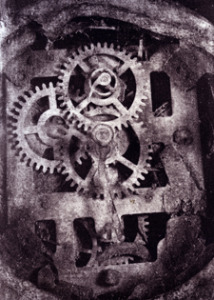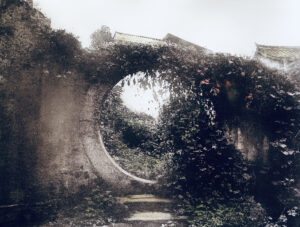-
September 17, 2024 - September 18, 2024
9:30 am - 4:30 pm
The oil print and bromoil processes create soft images reminiscent of painting but retains a distinctively photographic look. The painterly qualities of the prints continue to appeal to artists and have recently led some contemporary art photographers to take up these processes again.
The workshop is combing the two processes as the final inking process in the same.
The bromoil process is a variation on the oil print process that allows for enlargements from smaller negatives to produce a larger silver bromide (matrix) positive, which would then be bleached, hardened, and inked the same way as the oil printing process
ABOUT OIL PRINTING
Oil printing is the predecessor of Bromoil printing. This recognised by Englishman G.E. Rawlins in 1904 as an artistic creative expression in photography, although the observation of this process was first made by Alphonse Louis Poitevin in 1855. The oil pigment process works on the principles of lithographic printing where oil rejects water.

Gelatin-sized paper is coated with potassium dichromate solution, dried, and exposed through a contact print negative. The gelatin is selectively hardened in proportion to how light is exposed onto the paper through the negative. The paper is washed, dried and re soaked in water, the gelatin then swells in proportion to the hardening. Thick oil-based printing ink is applied to the paper, it remains on the areas with hardened gelatin and the water-swollen areas repel the ink.
BROMOIL HISTORY
The birth of Bromoils occurred in Great Britain. It evolved from the oil printing process developed by G.H. Rawlings in 1904, who worked out the theory, but never applied it. The process was thus invented by Englishman, C. Welbourne Piper in 1907 from the suggestion by Rawlings. This process flourished in the first half of the 20th century when pictorialism among photographers was in vogue.
ABOUT BROMOIL
A Bromoil evolved from the traditional black & white photograph where the silver particles in the image are replaced by oil based printing inks. This monochrome image is then treated chemically. All the silver particles are removed (bleached) and the gelatin coating of the paper conditioned (tanned) to accept oil based inks.
Prior to inking the bleached and tanned print (called the matrix) is soaked in water. A differential swelling of the gelatin takes place depending on the hardness of the gelatin. The ink is then applied to the prepared matrix by brushes. The ink will adhere to the hardest parts of the gelatin and repelled from the water saturated areas. With a variety of brush actions, all the tonalities found in the original photograph can be recreated – and more.
ABOUT THE WORKSHOP:
This two day workshop will start with an introduction to the process and making silver gelatin photographs. This will be followed by a practical bromoil/oil printing demonstration. The workshop includes bleaching and tanning of a bromide print and inking bromoil matrix.
This is a hands on workshop where the participants will produce a number of photographs. Outline of the two days:
1. The negative (includes instructions on creating digital negatives)
2. Paper choices
3. Gelatine & dichromate coating methods
4. Exposure
5. Washing
6. Ink and inking methods
All materials including lunch is provided – Starts at 9.30 am and concludes at 4.30 pm
ABOUT ELLIE YOUNG
Ellie has been practicing and studying the art craft and science, of ‘alternative’ photographic processes since 1994. More information click professional instructors
WHAT TO BRING
Negatives or digital files to create inkjet negatives:
All other materials including lunch is supplied: – bring an apron or lab coat or old comfortable clothing.

CLASS MAXIMUM 2
Bromoils evolved from the traditional black & white photograph where the silver particles in the image are replaced by oil based printing inks. This process creates subtle artistic images. The painterly nature of the bromoil makes every image unique – in either monotone or numerous colours.

